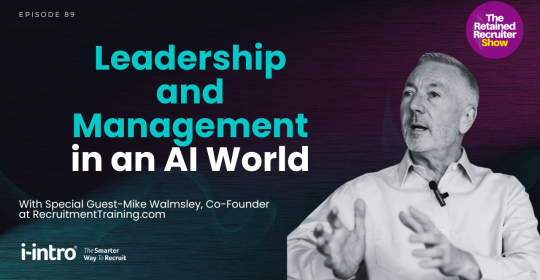Social media is a phenomenon that has rapidly percolated the English language and culture. But what will its real impact be on recruitment? Another revolution, or just a fad with a short shelf life? The debate has resulted in much discussion from those in the industry, including members of LinkedIn. See whether you agree with their viewsÖ.
Changes in digital recruiting
Armando Ruffini, Co-Founder & CEO of Zubka, demonstrates how digital recruiting has matured dramatically over the last few years: ìRecent statistics from BRMB Internet Monitor show that there are now 12 million people using the internet to find jobs in the UK alone. NORAS figures also tell us that online recruitment is increasingly successful, with 56% of online job seekers getting a job via the internet in 2007, compared with 44% in 2004. Online advertising revenues for the sector overtook those of national press in 2005 according to the Advertising Association, and are expected to overtake trade press imminently.î
Kelvin Newman, Natural & Social Search Manager at SiteVisibility explains how expectations have changed: ìAs more individuals and business have moved online inevitably competition has increased. This means recruiters and job boards must ëearní the attention of their audience rather just ëbuyí it or ëexpectí it. Itís no longer enough to have a website that merely is a list of current vacancies. You have to add value, this can come in a number of ways; building a community, producing compelling content or facilitating relationships between candidates & clients, whichever you choose more strategy and effort is required.î Nick Goldstein, Sales & Marketing Director at Jobtonic.com has seen a trend towards more niche sites serving ever smaller geographical or industry specific sectors. He says there has also been an emergence of web 2.0 companies bringing new online recruitment solutions to market, that mobile technologies are beginning to be utilised effectively and social networking has now opened up new opportunities to reach truly passive candidates.î
As Matt Martone, Manager of Media Sales Strategy at Yahoo! HotJobs points out, two years ago:
ï ìIt was uncommon for an employer to consider blogging for recruitment. Today employers are seeking out all the information they can on blogging and social media as they prepare to attempt to engage millennials.
ï Very few employers were using search engine marketing. Todayís its realizing supercharged growth.
ï Blogs werenít all that influential to the hr buyer.
New vendors are pushing new products and the historically slow to move hr/recruiting consumer is picking up steam and starting to adopt and inquire about new technologies. Some of the new vendors and offerings have legs. Some do not. He believes that social media is causing employers and recruiters to question, network, attract, engage and connect with talent like they have done before. He says this is causing employers to question their long standing online recruiting strategies.
Keith Busfield, Regional Manager at Career Management Consultants Limited believes the key change has been the rise and rise of social media and the increasing importance of the hidden job market: ì-in the world of executive outplacement, over 50% of people find new roles through routes other than advertised vacancies. The importance of networking for recruiter and candidate will become more and more important and I foresee a rise in employee referral schemes whereby employees will be remunerated for trawling the web for future colleagues. More information on candidates is more readily available, creating candidate pools that didnít exist before. The old headhunter question of ìdo you know anyone who might be suitableî works even more powerfully, as technology oils the wheels of the grapevine, to use a mixed metaphor.î However, he says he has seen other fads come and go, and therefore is cautious: ìChange is happening increasingly quickly and in many ways unpredictably through technology breakthroughs. Will Facebook and indeed Linkedin be around in the current format in 5 years time? I think not!! Heresy I hear people say. Will the web replace the press, radio etc? No, I think not. Experience suggests that it will be/is an incremental media, adding to what exists.î
Sophie Relf, Head of Marketing, totaljobsgroup.com says that the biggest changes have been led by consumers or jobseekers: ìThey expect the online jobseeking experience to mirror that of shopping or banking. Whereas you can track an order online, you canít track how your job application is doing because it stops at the point that it is submitted to the recruiter. Then itís down to individual employers to ëengageí with jobseekers. The better the engagement, the better the consumer/jobseeker experience. This is a far cry from web 2.0 or social media networking where would be recruits are welcomed into a virtual ëemployer brandedí world; which is pre-matched to their personality traits and squash playing prowess.î
Key benefits (and dangers?) of the rise of social media in recruiting
Accuracy of content is a big concern for many. As Kelvin Newman says, ìSocial media makes the distance between you and your customer much shorter; if you lie or underestimate them they will share their negative opinion. Social media allows word of mouth to spread across the world. However if you treat them with respect, they will trust you and act as evangelists and marketers for your company.î Keith Busfield points out that content written after a drunken night out on a social web site can be used against you by current or prospective employers, and warns that people have to be more and more careful about their candidate brand.
LinkedIn has summarised the benefits and dangers in their opinion for us:
ï Benefits
1. Easier to locate talent
2. More honest data b/c profiles are essentially peer reviewed
3. Easier to leverage your network to locate and reach talent
4. Relationship context helps build a trusted communication environment
5. Can do better reference checking
ï Dangers
Companies need to make sure that they are compliant with relevant regulations when using networking sites focused on people's social lives that have a lot of pictures
How can user generated content damage a company?
Caution is advised, as with any information available on the web. Armando Ruffini says: ìThe flip-side or danger to social media activity for recruiters is how it can negatively affect the perception of an employer brand. With increasingly blurred lines between consumer and corporate generated content, readers donít always know what it is they are reading, and therefore how much importance they should place on it. Good business practice today incorporates online reputation protection as standard, and any client you work with should be aware of its exposure, opportunity and risk within the social media universe.
Another potential negative is the temptation to use peopleís ëpersonalí data online to assess professional capability. This will always be prone to error. While we may chat in a very off-hand fashion with friends, a professionalís demeanour, in a professional capacity, is naturally and necessarily very different. We advise all our clients to take personal social media content with a healthy pinch of salt. Itís a great way to find out a little more about someone, but should never be used to base recruitment choices on.î
The old adage that any publicity is good publicity may still be valid however, as Kelvin Newman says: ìBrands worry too much about the risks of user generated content; if you have moderation in place, you can prevent anything illegal reaching the web. If the feedback is negative, let the dissenters have a voice and respond positively to their criticism. Itíll show the audience you are open to feedback, allow them to feel connected to your business and make you seem far more human.î
The next big thing?
Kelvin Newman says ìAt the moment most recruiters have their own site which they try to attract visitors to, many have begun to explore professional networks like LinkedIn, and in the future I think both recruitment consultants and job boards will have to participate and actively contribute to their industryís community. They will have to find out where their audience hangs-out online and monitor where relevant conversations are taking place and learn how to take part.î Nick Goldstein predicts that: ìThe empowerment of web users to monetize their social networks will continue apace. Platforms such as mine will allow highly networked individuals to offer employers an alternative to traditional recruitment agencies. We will see employee/candidate referral schemes begin to go online and social networking will fuel these schemes to reach the best talent.î
Keith Busfield foresees: ìGreater consideration of the needs of the candidate in view of the dearth of talent, for example; greater use of technology to sift and manage candidate processing whilst keeping the personal touch, the interlinking of websites & and websites that cull vacancies from a range of sites for particular functions, bringing all the opportunities together in one place, making them more visible to candidates.î Matt Martone believes career microsites will be the next big thing. He says theyíll integrate further with web 2.0., and include blogs, other social media and lead capture.
Impact of Web 2.0
One of our correspondents speaks for many of us when he says: ìI wish I knew what 2.0 wasÖ.!î Kelvin Newman explains that Web 2.0 is just a return to word of mouth; however every person can easily speak to the whole world. He says recruitment companies will live and die by the methods they manage their reputation, respond to criticism and contribute to their community.
The rise of web 2.0 and its social media capabilities is very exciting, says Armando Ruffini: ìVacancies will get more exposure, in more locations, in more niche sectors than ever before possible. Applications that tap into this shift, such as the Zubka-Jobs application on Facebook, can also drive consumer to consumer (C2C) promotion of worthwhile opportunities amongst groups of trusted contacts, outside of the hirer and recruiter involved. This has the opportunity to vastly increase the reputation, visibility and activity around a vacancy. The future of social media offers a wealth of new ways to interact with core audiences and it really is a case of keep up, or miss out. One such example is widgets ñ or windows onto other websites ñ which will be a big story in the future as consumers start to drive relevant content to their chosen destination rather than visiting the content owner. Now incorporated into all new Windows and Apple operating systems, we predict mass market penetration among internet users within 2 years.î
Nick Goldstein advises companies to keep up: ìNew technology based tools will become available to forward thinking companies who want to engage with the best talent. The early adopters will do the best over the short term and pave the way for more cautious companies. Companies who resist change will be left behind and their businesses will ultimately suffer. Print recruitment advertising will continue to lose revenue to job boards but likewise job boards will have new competition in the form of web 2.0 recruitment solutions.î This does not mean the human touch is lost, however, as Matt Martone says: ìA very bright recruiter recently told me that she thought social media let recruiters get back to recruiting because they help her network and communicate. She was spot on. Thatís what recruiting is about, networking and communicating, not screening thousands of unqualified resumes. Web 2.0 is taking recruiters back to recruiting.î
Finally, some wise words from Armando Ruffini sum up: ìThe reality of social media is that it is self-managed and self-promoted. We cannot, as recruiters or even businesses, be in the driving seat. But we can make sure that we do our homework, engage with consumers in their own domain and above all make sure we continually innovate to match needs, usage and expectations.î
There are so many diverse directions and opportunities offered by social media and associated new technology, it is difficult to be sure which will survive and thrive. No doubt natural selection will take its course. Witness the evolution in progress in 2008!
Social Media & its Impact on Online Recruitment- revolution or fad?

Social media is a phenomenon that has rapidly percolated the English language and culture. But what will its real impact be on recruitment?





